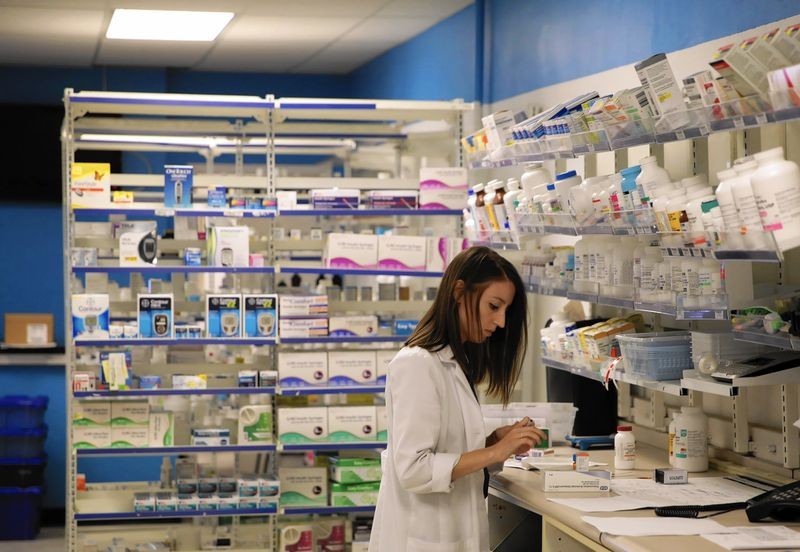
Of all professional pursuits, doctor’s careers are especially fragile. Beyond the years of schooling, residency, and subsequent testing, providing patient care is an incredible responsibility that can be emotionally taxing. A misstep can mean the loss of one’s license, reputation, and potentially the end of their career.
The decision to become doctors is weighing particularly heavy on the country’s roughly 300,000 pharmacists as they are increasingly being taken to task for their role in America’s opioid crisis.
Between the vague guidelines established by the Drug Enforcement Administration (DEA) and mounting opioid-related litigations naming them and their employers as defendants, pharmacists are left to create their own playbook for keeping drugs out of the hands of abusers – and protecting their livelihoods.
A Slow Burn
Earlier this month, CVS, Walgreens, Costco, Walmart, and Rite Aid were among 300 plus named defendants in The National Prescription Opiate Litigation, also referred to as its docket number, MDL 2804. The case is the largest consolidated civil lawsuit in history consisting of more than 2,000 pending suits tied to the opioid epidemic. It may come as a shock to some that several of the country’s most well-known and frequented retailers are named in the case, but pharmacist liability for the epidemic has been bubbling up for years.
In 2017, CVS paid a $5 million settlement after it was found nine of its pharmacies failed to sufficiently document its handling of thousands of hydrocodone doses that were stolen and otherwise couldn’t be accounted for. The following year, the popular pharmacy chain paid out two separate settlements totaling more than $2 million for additional opioid loss and record keeping violations.
Independent pharmacies have also been indicted for contributing to and proliferating the epidemic that kills close to the same number of Americans annually as gun violence and car accidents. In the early 2000s, a small town pharmacist in West Virginia, a state hit particularly hard by the epidemic, was arrested and admitted to filling up to 200 opioid prescriptions daily out of a single clinic. A different Mountain State pharmacist made $500,000 in a single month on prescriptions in a town of only 400 residents.
While the outcome of the landmark suit remains to be seen, it makes it clear that ignorance is no longer an excuse, and leniency should not be expected when it comes to opioid-related oversights and illegal activity.
Eroded Trust
Pharmacists who believe the DEA will serve as a buffer between individuals and federal lawsuits are making a false assumption. In fact, the agency itself is in hot water following a newly available report by the Office of the Inspector General. The findings list several criticisms, including mismanagement in how the agency distributed registrations for controlled substances, insufficient vetting of pharmacists and physicians, and irregularity in the cadence it requires pharmacies to report drug sales.
Pharmacists lack support from above, and the outlook isn’t much sunnier at the peer level. In a previous post, I discussed how escalating litigations are pitting players in the drug chain against each other. With billions of dollars and the reputations of some of the country’s largest and most profitable corporations on the line, it’s fair to assume the finger pointing will continue and that it will increasingly be in the direction of pharmacies and pharmacists.
In the effort to get to the bottom of who’s responsible for the opioid crisis, it’s every man – or entity – for themselves.
More than just a monitoring tool, OrderInsite’s advanced analytics provide pharmacists a new layer of insights, helping manage drug orders, identify potentially illegal activity, and prevent overprescribing.
Fighting Back
Understanding the scope of the situation and potential implications, yet lacking trusted partnership with cohorts and a defined path forward, pharmacists are left in a precarious position. Those who decide to take a proactive approach to protecting patients and themselves can start by taking a few basic, but effective, measures.
Opioid Stewardship
Summarized in a Pharmacy Times article, Clinical Professor of Pharmacy at the University of Rhode Island Jayne Pawasauskas, PharmD, BCPS, introduced the concept of opioid stewardship at this year’s Directions in Pharmacy conference. Dr. Pawasauskas talked of the need for “conscientious prescribing practices,” including the use of drug formulas less likely to be addictive and abused. She emphasized the need for more treatment centers and “opioid exit plans” to prevent inadvertent tapering and appropriately wean patients off drugs and help them avoid withdrawal.
She also spoke of the benefits of state-employed prescription monitoring programs and the need for hospital leadership to work closely with clinicians to vet and purchase monitoring equipment.
Technology
If pharmacists recognize they need the supplemental support third-party resources can provide, they may not be aware of the existence of such technology and its capabilities. More than just a monitoring tool, OrderInsite’s advanced analytics provide pharmacists a new layer of insights, helping manage drug orders, identify potentially illegal activity, and prevent overprescribing.
Innovation
Albertsons, one of the nation’s largest grocers and pharmacies, announced last month DisposeRX, a program encouraging at-home medication disposal. For a little more than a dollar each, Albertsons customers can purchase packets at its pharmacy counters containing a drug-dissolving powder activated by water. Rendered unusable, the idea is that patients can discard drugs easily and safely.
Whether a move to divert attention from it being named in The National Prescription Opiate Litigation or an initiative that had been in the works long before the company came under fire, the program is a positive step in mitigating opioid abuse.
Change Agents
If the adage “all great changes are preceded by chaos” is true, it certainly feels like we’ve reached a tipping point in a crisis that’s been snowballing for 20 years. Pharmacists have two options – continue defending themselves or begin playing offense. If they choose the latter, they should feel empowered knowing partners like OrderInsite are in their court.
Co-Founder / CEO
George Lazenby is the CEO and co-founder of OrderInsite. He is an experienced CEO and Board Member with a demonstrated history of working in the health care industry and skilled in healthcare information technology (HIT), management, sales, executive management, and strategic planning. He was previously CEO of Emdeon (now Change Healthcare).


